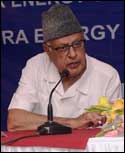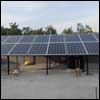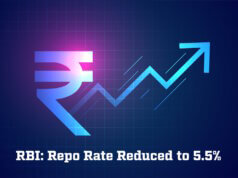India is poised to realize its aspiration of having 100 GW of grid-connected solar power capacity by 2027, noted Dr Farooq Abdullah, Union minister of new and renewable energy. He was addressing a roundtable discussion on grid-connected solar rooftop PV systems, recently organized in Mumbai, by Welspun Energy Ltd. While assuring the large gathering of solar power developers present at the event of all possible government support, Dr. Abdullah sought that developers give back to the country indigenous technology. He stressed that developers and other stakeholders should invest in R&D and keep elevating the standards of solar power technology in India.
In a well-received address, Dr. Abdullah noted that in order to move forward, one has to experiment, and solar power represented one such experiment that the country needs to conduct with utmost sincerity. The green energy minister maintained that India’s dependence on oil-rich and coal-rich countries was never sustainable. He shared his dream of “India led by God’s energy.” Apart from solar energy, Dr. Abdullah also urged developers to look into other forms of inexhaustible energy sources like geothermal and tidal energy.
 Meanwhile, Rajendra Nimje, Managing Director of the newly-incorporated Central public sector entity Solar Energy Corporation of India Ltd dwelt on the huge potential of grid-connected rooftop solar PV plants. He estimated that India had 330 million households and even if 25 per cent of the rooftops are exploited, solar capacity of 25,000 mw was technically possible. Nimje also highlighted that solar tariffs are rapidly coming down and that grid-parity could be achieved by 2017-18, much earlier than 2020 as envisaged in the Jawaharlal Nehru National Solar Mission. The SECI chief observed that while Rajasthan and Gujarat have taken a lead in rooftop solar installations, Maharashtra has made a good start.
Meanwhile, Rajendra Nimje, Managing Director of the newly-incorporated Central public sector entity Solar Energy Corporation of India Ltd dwelt on the huge potential of grid-connected rooftop solar PV plants. He estimated that India had 330 million households and even if 25 per cent of the rooftops are exploited, solar capacity of 25,000 mw was technically possible. Nimje also highlighted that solar tariffs are rapidly coming down and that grid-parity could be achieved by 2017-18, much earlier than 2020 as envisaged in the Jawaharlal Nehru National Solar Mission. The SECI chief observed that while Rajasthan and Gujarat have taken a lead in rooftop solar installations, Maharashtra has made a good start.
Rooftop solar plants have been a huge success in Germany. Tarun Kapoor, Joint Secretary, Union ministry of new and renewable energy, observed that in that country, 70 per cent of the 35 GW of installed grid-connected solar power capacity came from rooftop plants. Dr. Abdullah also remarked that Germany, despite receiving much lower solar irradiation than India, has taken big strides in solar energy – driven largely by government support and public resolve.
Tarun Kapoor was confident that India’s future energy requirements will be met through renewable sources. He also observed that in addition to the Central government support, several state governments are offering fiscal benefits like generation based incentives to further accelerate the solar energy momentum. Regarding grid-connected rooftop installations, Kapoor noted that the JNNSM has set a target of installing 1,000 mw worth of such plants by 2017.
Girish Pradhan, Chairman, CERC, who was the guest of honour at the roundtable conference admitted that grid-connected rooftop plants did have their share of technical and commercial concerns. “Net metering” was a major aspect that needs to be looked into. In a grid-connected plant, the owner of the plant can potentially export surplus power to the grid. This makes him both a consumer and supplier of electricity, warranting the need for net metering (consumption of electricity net of export). Rajendra Nimje of SECI also highlighted net metering as a key challenge, apart from some others like grid connectivity in remote areas and determination of feed-in tariff for export of surplus power from the rooftop installation.
On the sidelines of the conference, Rajendra Nimje observed that the primary thrust of solar energy was through the photovoltaic route, efforts are being made to promote solar thermal technology as well. The latter, though more efficient, entails high capital costs, he said. He said that SECI was planning to develop two 50-mw plants through solar thermal technology at locations yet undecided. On the solar photovoltaic front, an ultra mega power plant with installed capacity of 4,000 mw was being planned at Kharaghoda in Surendranagar district of Gujarat. It may be recalled that SECI in association with five other public sector entities very recently came together to form a joint venture to develop a mega 4,000-mw solar photovoltaic plant in Rajasthan. The Rs.7,500-crore project will take seven years in the making. The first phase with 1,000 mw is expected to complete in the next three years.
Solar energy is rapidly growing in India thanks to the Jawaharlal Nehru National Solar Mission that was launched in January 2010. The policy envisions 20 GW mw of grid-connected solar power capacity by 2022. In the early months of 2013, India’s grid-connected solar power capacity crossed the 1-GW mark.











